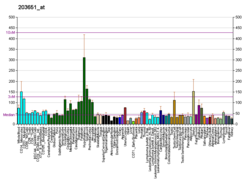| ZFYVE16 | |||||||||||||||||||||||||||||||||||||||||||||||||||
|---|---|---|---|---|---|---|---|---|---|---|---|---|---|---|---|---|---|---|---|---|---|---|---|---|---|---|---|---|---|---|---|---|---|---|---|---|---|---|---|---|---|---|---|---|---|---|---|---|---|---|---|
| |||||||||||||||||||||||||||||||||||||||||||||||||||
| Identifiers | |||||||||||||||||||||||||||||||||||||||||||||||||||
| Aliases | ZFYVE16 , PPP1R69, zinc finger FYVE-type containing 16 | ||||||||||||||||||||||||||||||||||||||||||||||||||
| External IDs | OMIM: 608880; MGI: 2145181; HomoloGene: 8826; GeneCards: ZFYVE16; OMA:ZFYVE16 - orthologs | ||||||||||||||||||||||||||||||||||||||||||||||||||
| |||||||||||||||||||||||||||||||||||||||||||||||||||
| |||||||||||||||||||||||||||||||||||||||||||||||||||
| |||||||||||||||||||||||||||||||||||||||||||||||||||
| |||||||||||||||||||||||||||||||||||||||||||||||||||
| |||||||||||||||||||||||||||||||||||||||||||||||||||
| Wikidata | |||||||||||||||||||||||||||||||||||||||||||||||||||
| |||||||||||||||||||||||||||||||||||||||||||||||||||
Zinc finger FYVE domain-containing protein 16 is a protein that in humans is encoded by the ZFYVE16 gene. [5] [6]
The ZFYVE16 gene encodes endofin, an endosomal protein implicated in regulating membrane trafficking. It is characterized by the presence of a phosphatidylinositol 3-phosphate-binding FYVE domain positioned in the middle of the molecule. [7]
In melanocytic cells ZFYVE16 gene expression may be regulated by MITF. [8]




